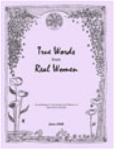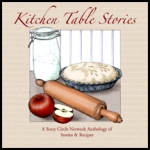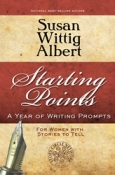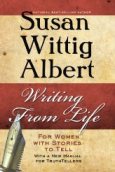Last month we looked briefly at what it might mean to approach our writing from a ‘mindful’ perspective. This month we shall get down to some specifics. While there are many ways of engaging with the process of mindful writing, some styles are more conducive to meditative ruminations than others. Haikus spring immediately to mind.
Most readers, I’m sure, have heard of haiku, and know that they utilize a unique and precise structure. Traditionally each haiku consists of 17 syllables divided over 3 lines of 5 – 7 – 5. There is a marvellous freedom to be discovered within the confines of such a disciplined approach. Writing haikus is my personal preferred form of mindful writing, my go-to genre when feeling uncertain and perplexed. It never fails to ground me in a broader, deeper field of light-filled consciousness. Writing haikus lands me directly in the heart of the present moment, for a haiku is always a record of what is occurring right here, right now.
Here are a few of my most recent haikus:
Waterfall of rain,
curtain of transparent lace,
streams down my window.
*
Winter’s cold breath still
drifts over field’s feathered wisps,
farewell kiss of frost.
*
Transparent curtain
envelops world in grey shroud –
rain falling again.
*
Sudden summer storms
blustering across the fells,
orchestrated dance.
*
Hills etched like blue veins
horizon melts into mist,
gale squalls whipping up.
*
Torn buds, white and frail,
summer tries to show its face,
battered as it bloomed.
*
Blowsy blossoms fall
half-drunk with fragrant splendour,
summers whispered sighs.
Similar in brevity, though less rigid or formal in intention and technique, there is another, slightly different, approach to ‘mindful’poetry. Satya Robyn [http://www.writingourwayhome.com/], refers to them as ‘stepping stones’. Sam Green, in his poem ‘The Grace of Necessity’, prefers ‘small noticings’. Names may differ but intentions remain the same. A rose is still a rose.
To take the time to write a ‘small stone’ or ‘small noticing’ is to engage in a practice which helps us to focus and observe what is going on in our worlds, both inner and outer. We begin our practice by slowing down, allowing ourselves to find the still point of silence deep within. Using our senses we turn to that which we have decided to observe, and look, look closely, listen, touch, look again, waiting to hear with the ‘ear of our heart’ the first murmurings of our souls desires. Then, with senses saturated with sensual stirrings, we write down exactly what we have seen, heard, felt.
How much should I write? The answer to this is simple – as much or as little as you feel called to do. When I write ‘small stones’ I usually write something akin to the length of a haiku, eg a few short, descriptive lines filled with vivid imagery and luscious detail. But unlike haikus, I don’t restrict the structure of what I write to any pre-ordained or set order. Essentially ‘small noticings’ capture those moments when we are fully aware and engaged with the present. Nothing more, nothing less.
There are typically two main steps in writing ‘small noticings’ –
(i) Look and see, observing what is directly in front of you very closely, perhaps focusing on one particular aspect of the object. Be careful that you don’t rush through this step. Take your time.
(ii) Write down what you have noticed. Breathe into your noticing. Enjoy the sensual experience of conveying what you are experiencing through your opened senses on to the pristine white page of your mindful writing note book. Rest. Breathe.
And that’s all there is to it! As you engage in this practice, especially if you make it a daily practice, you will slowly begin to notice something else, something about yourself which perhaps you might not have realised before. Over time you may notice certain themes, symbols, images and metaphors which continue to manifest in your writing. Welcome them, sit with them, explore them. Most of all write your way into them. This is what it means to write yourself home.
Try and aim to write something every day. Remember this is not a practice which requires a lot of time. Indeed it may not call for much more than 10 minutes each day. But if you engage with it on a regular basis, you will notice a difference in how you see the world you live in, the everyday world which surrounds you and which you normally hardly notice. Writing mindfully, we are learning to see again with new eyes, new vision, so that everything old is new again.
• Let go of trying to direct your writing and the flow of your words. Let go of judging and worrying and criticizing your work. Let go of what you think your writing should be. Let go of all the ideas you have accumulated over the years about what it means to write. In mindful writing we just write.
• Especially for this awareness practice, I recommend that you carry a small notebook with you through your day and capture those small moments of heightened awareness as you move through the hours.
• Perhaps you might like to share some of your ‘small noticings’ in the comments section below.
There is nothing to achieve here, no goals to be reached. Mindful writing has more to do with deepening and enriching our daily lived experience than in producing a body of work, though of course it is more than likely that much of what we find ourselves writing here will serve as springboards to future works, whether these will be poetry, memoir, creative non-fiction or fiction. But for now they are simply small offerings, glimpses through the veils behind which lies visions and vistas yet to be seen or even imagined. Enjoy your mindful writing, and remember that ultimately it’s a practice designed to get us to slow down and notice the world we live in!
Check out the following website for lots of examples of ‘small stones’: http://www.ahandfulofstones.com/
– Edith Ó Nualláin lives with her family in a small village on the east coast of Ireland, snuggled between the mountains and the sea, where she reads, writes occasional reviews, and spins exotic fibres into yarn. Some day she hopes to learn how to spin straw into gold.






Love this love this love this!!! Any time that I’m feeling empty toward writing I try to do something poetic…no matter how rediculous it comes out! Just the act of writing lyrically sets the neurons to firing and I can focus in a relaxed and opened way and get those words onto the page!
Kassie aka “Mom”
Yes, and small stones/noticings and haiku are just perfect for a super quick dose of something poetical in an otherwise busy day! Thanks for dropping in to say hello 🙂
Edith, thanks for another beautiful post. I’ve replaced my small notebook with my smart phone, and often post my small noticings on Facebook. Going Public seems to be okay. Here is one from Sunday when I went out to check the blackberry brambles in my father’s hay field.
Blackberries scarce. Mosquitoes a’plenty.
Keep the posts coming! You are weaving the straw of daily life into gold.
Janet Riehl
Ah yes, the smart phone is perfect for quick jottings too! 🙂 I love your small stone, love the rhythm and the images. Thanks for dropping by!
Here’s my small stone for today:
Small stones in a glass jar
Smooth, rough and polished
Bookmarks back to favored destinations.
Changed as requested Vickie 🙂 What a beautiful small stone.
Sorry, auto correct changed stones to stonewall. Can you either delete or correct this post. Doesn’t make much sense this way! 😕
love this post, Edith. I appreciate the reminder to give my attention to the world around me. here’s how today is looking:
cottonwoods sparkle
in the breezy morning light,
clouds blooming behind them.
Susan thanks for sharing this delightful image with us here. It’s luminosity sparkles and glistens with your ‘breezy morning light’. Beautiful!
Pingback: Waking Up, Writing Down | In a Room of My Own